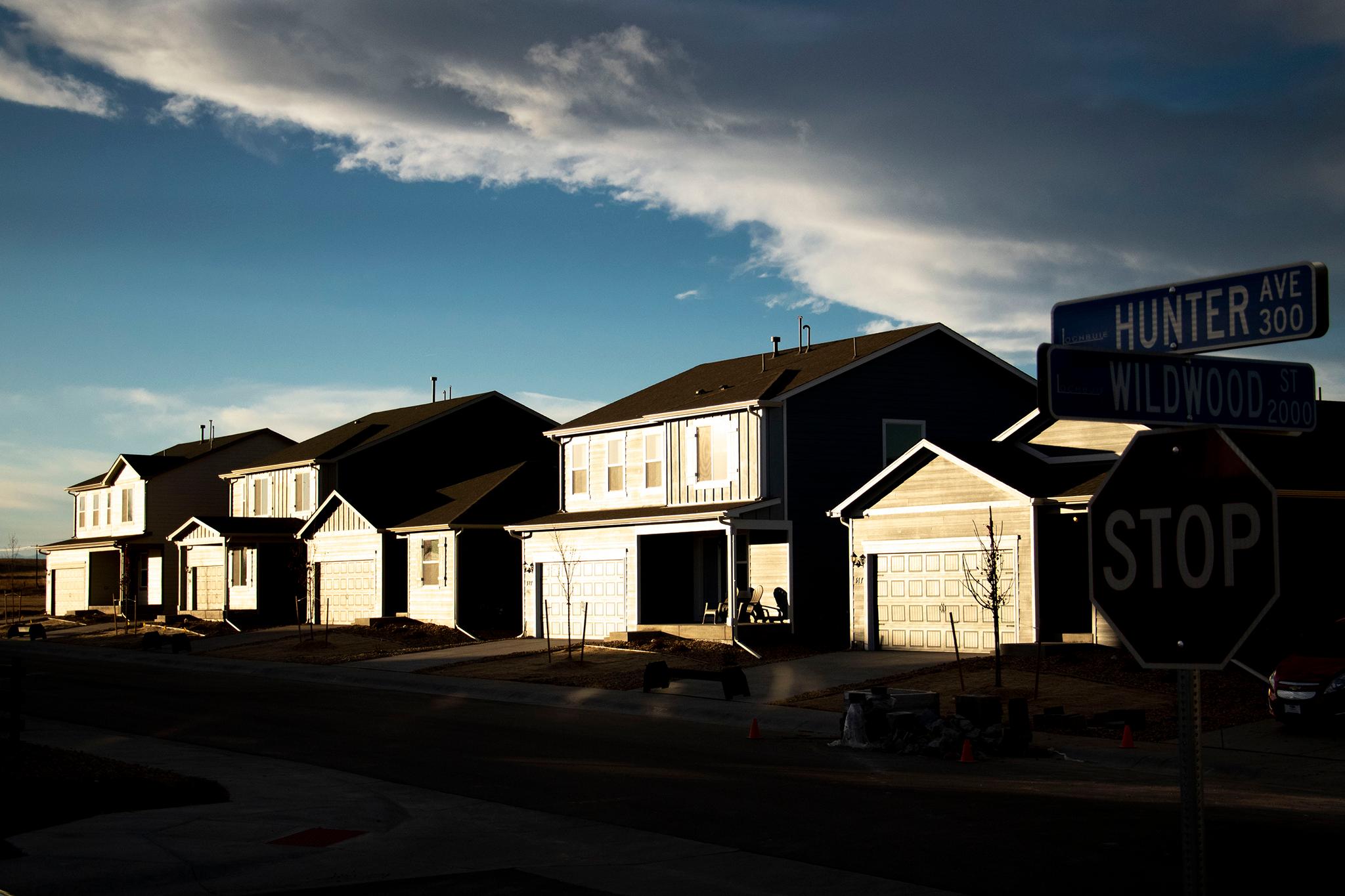
When Lisbeth Redandes learned that the lease to the apartment she shared with her boyfriend was up at the end of May, she panicked.
Months ahead of time, the elementary school Spanish teacher started looking for a new place in her new home of Gypsum, half an hour west of Vail.
They pay $1,600 a month for a one-bedroom apartment but haven’t been able to secure another. Most rents are more than $2,000.
“I know that there are people that can afford those prices but the teachers can’t,” she said. “I don’t like the sensation of not knowing what will happen.”
“Housing is tough here,” said Redandes, who was a teacher for 10 years in Mexico. Last year she heard about the J-1 visa program for international teachers to teach in the U.S. for three years. But by the time she was hired last spring, there were no more vacancies in the Eagle County school district’s affordable housing units.
“I know teachers that needed to stay in hotels or Airbnbs before they could find a place,” she said.
And that’s a teacher trying to rent a place — it’s even tougher if they want to buy a house in Colorado. Unless a teacher already owns a home, new ones simply cannot afford a home in Eagle County. That’s the case across the state.
Teachers can afford just one in five homes in Colorado, despite the increase of average salaries. A new study shows the vast majority of people who educate the state’s 900,000 children are simply priced out of homeownership in the school district where they teach, not to mention the ever-increasing renting costs.
The Keystone Policy Center, which analyzed salaries and the number of affordable homes at the school district level, showed that in a vacuum, raising wages will not solve affordability challenges.
“You can't solve the housing issue just by raising teacher salaries,” said Van Schoales, a senior policy director at the center. “You have to address it through housing policies.”
According to the study, solving the state’s housing crisis will take collaborative solutions from state and local officials and community partners.
It found that more than 80 percent of teachers who live along the Front Range and in mountain communities have the smallest share of homes that teachers can afford. But other areas of the state are far more affordable: the San Luis Valley, Pueblo and Huerfano and Las Animas counties, and the Eastern Plains.
(People can explore different regions of the state for home affordability on this interactive map.)
The study considers it “affordable” when a teacher’s monthly housing costs would not exceed 30 percent of his or her monthly pay.
Who will teach students if educators can’t afford a place to live?
Housing costs are a significant barrier to recruiting and retaining teachers as Colorado faces a teacher shortage. The study said in the last five years, 14 percent to 17 percent of teachers left their positions at the end of each school year. Moreover, 13 percent of all open positions were filled last year by a “shortage mechanism” like hiring long-term substitutes, retired educators and candidates who had emergency authorization, according to the study.
The problem is accelerating. While 20 percent of all homes are affordable now, that’s down from 38 percent in 2007. Interest rates also play a big role in whether people can buy homes. Following the foreclosure crisis, 55 percent of all houses in 2015 — a statewide high — would have been affordable to the average teacher because of falling home prices and interest rates, the study shows.
The report notes that the Federal Reserve is actively increasing interest rates to slow inflation, which will make a home purchase even more out of reach for educators. Colorado has seen more than a 20 percent increase in home prices in the last year alone.
What are teachers’ salaries in Colorado?
In the wake of the 2008 recession, teacher salaries in Colorado stagnated around $50,000 until 2015-16, when salaries started to increase. Over the past seven years, average teacher salaries have increased nearly 25 percent; in 2021-21 the average teacher salary in Colorado was just over $60,000. However, the study said the increase was driven mainly by teachers in metro area districts.
“It’s incredibly misleading to compare, let's say, a teacher in Boulder versus a teacher in Eagle County versus a teacher in Manitou Springs,” said Schoales, who adds that there’s also a lot of variability in salaries and home prices within regions.
Eighteen districts pay an average teacher salary at or above the statewide average. But the vast majority — 160 districts — pay less than that, with most well below the statewide average teacher salary. The average district paid under $48,000 [1] to its average teacher in 2020-21, in line with the statewide average salary of over a decade ago.
How affordable are houses for Colorado teachers?
In 2021, out of nearly 1.9 million homes, less than 20 percent were valued at a price that was at or below the affordability threshold in the district. Some parts of the state, however, are more affordable for teachers.
Out of 178 school districts, the average teacher in only 36 school districts live in communities where 90 percent of the housing units would be affordable for the average teacher. Not surprisingly, the Front Range and mountain resort community were the least affordable to teachers.
Teachers in 24 school districts live in communities where less than 10 percent of the housing units are affordable for the average teacher. A little more than a third of the housing in the Western Slope was affordable to the average local teacher.
The study didn’t find a strong association between higher salaries and better access to affordable housing in a particular district.
For example, average teacher salaries in the St. Vrain district, which includes several communities in between Boulder and Denver, increased from $53,000 in 2015 to $65,000 during 2021-22. But while 46 percent of houses were affordable in 2015, less than 10 percent were affordable in 2021 — despite a 13 percent increase in the supply of homes over that same period, according to the report.
In Summit County, increasing teachers’ salaries from an average of $51,000 in 2007 to $67,000 in 2021 helped make a few more units affordable but barely. Less than 1 percent were affordable in 2007, but only 6.5 percent of housing units are now.
“Affordability concerns are still high, and homes are broadly unaffordable even with higher wages,” the report states.
In a tiny district bordering Nebraska on the northern end of Colorado — Plateau RE 5 — things are better for the district’s 17 teachers. In 2007, about 97 percent of units were affordable on a $35,000 salary. And by 2021, with average salaries at $41,000, 76 percent were affordable.
Still, the report notes, “this limited supply could contribute to a housing crunch, even if most of the supply is in fact affordable.”
In Manitou Springs, a district serving about 1,500 students west of Colorado Springs, salary increases can’t keep pace with rapidly increasing home prices. While the average salary for teachers increased 32 percent between 2015 and 2021, the percent of affordable houses dropped by more than half. The report states that in 2021, a teacher earning the average salary could afford to purchase 17 percent of the homes in the district.
What can be done?
The report’s authors want the study and interactive salary/housing map to launch conversations between state and community partners on how to design pathways to homeownership for teachers and other middle-income essential workers like firefighters and nurses. Some ideas:
- Could communities help potential homebuyers with solutions besides down payment assistance — for example, addressing mortgage interest challenges?
- Can school districts leverage their land, property, or capital resources to increase the supply of houses affordable to teachers, as well as increasing rental access and affordability? (The Roaring Fork district has created many affordable housing units for educators and plans more.)
- Can school districts and communities tap into federal tax credits like Low-Income Housing Tax Credit (LIHTC) to increase the supply of homes?
- Examine affordable housing programs and research efforts in other states. (The California School Boards Association and two major universities developed a comprehensive overview of the potential for land owned by school districts to be designed and developed for teachers and other employees. In addition, Washington, D.C., has a program that offers government employees, including teachers, a deferred zero percent interest loan of up to $20,000 and a $10,000 matching-funds grant for the purchase of a first home.)
- Explore how approaches to making housing affordable for teachers can be applied to other middle-income essential workers in the community.
More help could be on the way for Eagle County School District teachers.
“When you’re looking at a beginning teacher that’s making $40,000 to $45,000 a year and the minimum rent is $2,400 a month, it’s just not sustainable,” said Melisa Rewold-Thuon, an assistant superintendent.
Currently, the district has master leases on several properties and sub-leases them to new teachers at more affordable rates. The district also initially covers first and last month’s rent and recoups those costs from the employee over time. But there aren’t enough affordable units, particularly family housing. She said nine out of 10 times veteran teachers, after accepting the position, decline because they can’t find housing.
The district has plans to build a 37-unit housing project for educators, using a middle school as collateral for the loans. It will be rented out at rates significantly below market — about $1,400 for a one-bedroom.
Because the district has so many international teachers, next year it plans to give them a stipend to help them get set up in the community.
“We are doing a lot to try and figure out how to make it easier to move into our community and make it easier to stay here,” Rewold-Thuon said.
Finally, Eagle County residents will consider a 2 percent tax on tourist lodging that would allow 90 percent of the revenue collected to be directed to affordable housing and child care for the local workforce. State lawmakers passed a bill this spring giving counties the freedom to request that of voters.
Colorado voters may see a measure on the ballot this fall that would dedicate one-tenth of one percent of state income tax to affordable housing.
Lisbeth Redandes’ landlord extended her lease until October.
She’s working this summer at a school in Eagle.
She wishes that the people who own the houses and rent them out to others understood more deeply how critical the situation is for essential workers like teachers and nurses.
“I know that in these times everyone needs to make more money for retirement and all of that, but at the same time, it’s like, who will take care of your children or who will take care of you when you’re older if no one can afford to live here?”
Redandes hopes she can continue teaching in Gypsum until the end of her three-year visa.
She said she knows there are great people out there who won’t raise the rent on teachers, but she hasn’t found them yet.









